What are the varieties of Arabica coffee beans? What are the derived varieties and taste characteristics of Arabica coffee beans?
It is said that delicious coffee is inseparable from its variety, and the most common is that Arabica coffee beans and Robusta coffee beans are the two most common beans. Arabica varieties are considered to be the best of all varieties, most of them appear as boutique coffee, and the overall flavor is better. Our famous Blue Mountain Coffee and Hawaiian Kona Coffee and Qianjie 2013 tanning iron pickup are all Arabica varieties. Let's take a look.
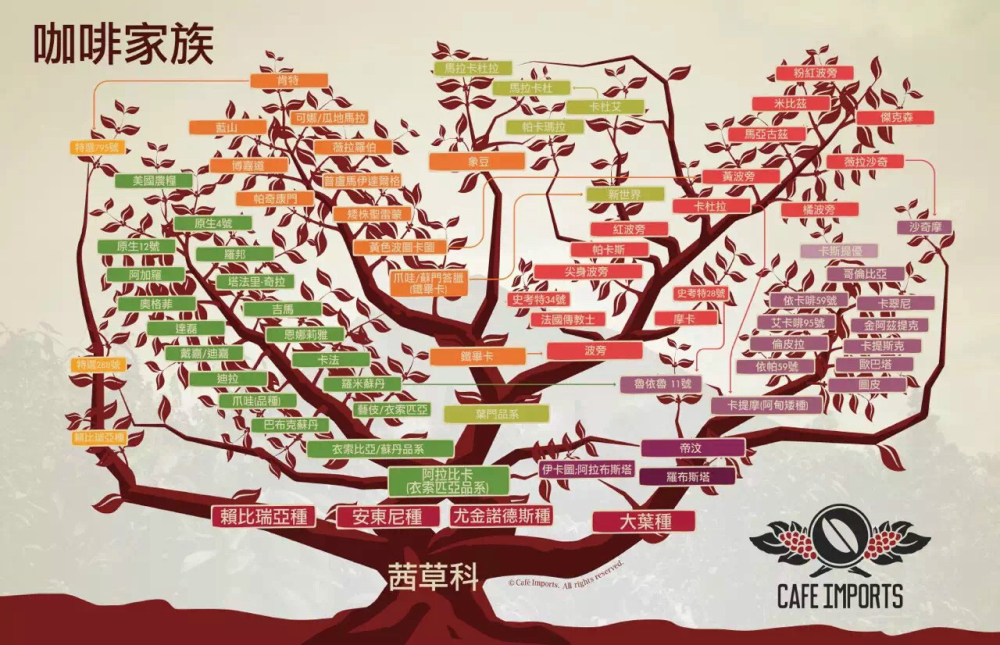
Although coffee has become a part of everyone's life, there may be many friends who don't know about coffee. Why do you say that? Qianjie believes that coffee itself is a deep knowledge, and if you want to understand coffee, you must start with coffee beans. There are more than 100 kinds of coffee in the world, which can be roughly divided into three native species: Arabica, Robusta and Liberia. Among them, the two main types of coffee beans on the market are "Arabica" and "Robusta". More than 3/4 of the coffee sold worldwide are Arabica beans, and most of the rest are Robusta beans.
Arabica Arabica
Arabica (Arabica), also known as small-grain coffee beans, is native to Ethiopia and is mainly grown in South America (except parts of Argentina and Brazil), Central America, Africa (Kenya, Ethiopia and other places, mainly East African countries) and Asia (Yemen, India, Papua New Guinea).

Arabica coffee refers to Arabica coffee trees, accounting for about 70% to 80% of the world coffee production. Due to its weak resistance to diseases and insect pests, slow growth and low annual output, Arabica coffee is more suitable for cultivation at high elevations. Most of Arabica coffee is grown on volcanic slopes or plateaus above 1500 meters above sea level, especially Arabica coffee beans produced on highlands above 1500 meters are of relatively good quality. The high altitude environment makes the coffee beans grown here ripen more slowly, which means the beans will be stronger and stronger, so Arabica naturally stands out as the highest grade coffee beans. After repeated mutations or mating, many varieties are derived. Now, it is said that there are more than 70 varieties of Arabica coffee alone.
Arabica can be divided into 2,000 to 3,000 varieties, all of which are derived from the oldest native species of Ethiopia, Iron pickup and Bourbon cultivated in South America or Asia, mainly in Central and South America such as Brazil and Colombia, Central America Tiko and Sidamo, Sumatra Iron pickup in Indonesia and the Blue Mountains of Jamaica.
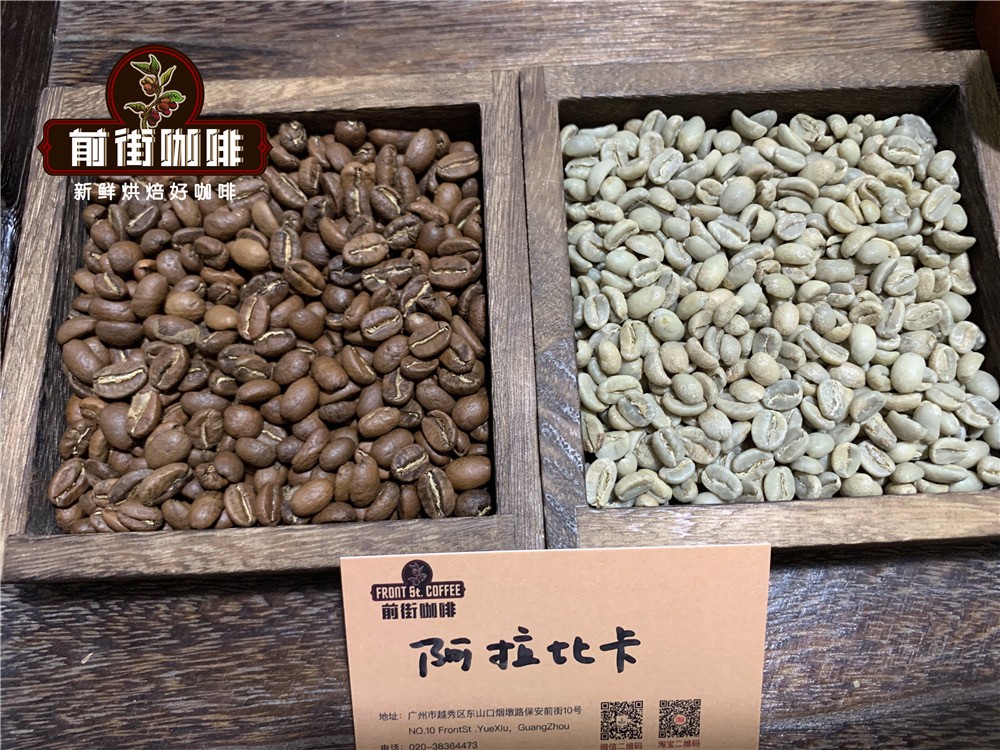
From the point of view of appearance, Arabica bean is long and flat, the central line is S-curve, Robbosa bean is strong, the shape is more round, and the central line is closer to a straight line. Although it is the same kind of Arabica coffee tree, but planted in different places, due to weather, soil and other effects, it will produce a completely different flavor. For example, the taste of rose summer in Ethiopia is completely different from that in Panama.
The region where coffee beans are suitable for growing is in the countries between the Tropic of Cancer and the Tropic of Cancer, called "Coffee Zone", where Central and South America, Arabia, East Africa, southern Asia, and Oceania are all in this region, and the better coffee can be produced in countries with alpine topography, because coffee is suitable for growing on slopes around 1000 to 2000 meters above sea level and requires sufficient rainfall, but not too wet. It is best to have mild sunshine during the day, clouds in the evening, and a temperature of about 10 degrees Celsius but not too low at night.
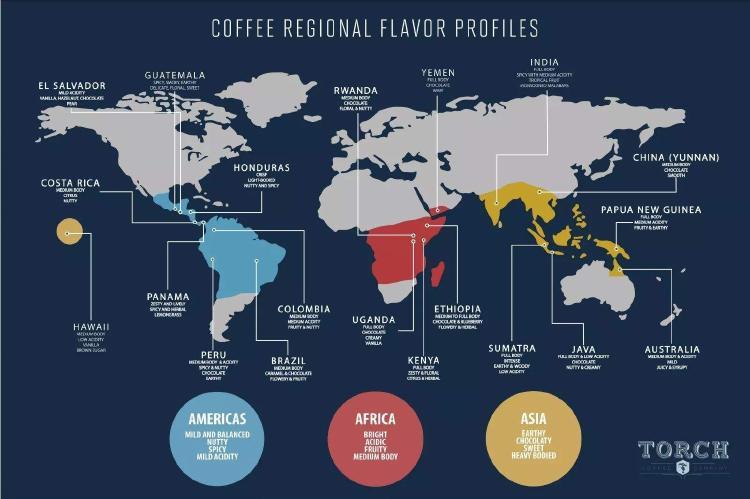
Robusta
Robusta is the second largest producer of coffee beans in the world. Robusta coffee beans are both hardy and immune to a variety of diseases. This type of coffee beans grow best in hot climates with irregular rainfall and can also grow at many elevations. Robusta contains twice as much caffeine as Arabica beans, which means they are a great choice for a real pick-me-up. Qianjie thinks that those friends who are sensitive to caffeine can get around it, but if you make espresso, it tastes good.
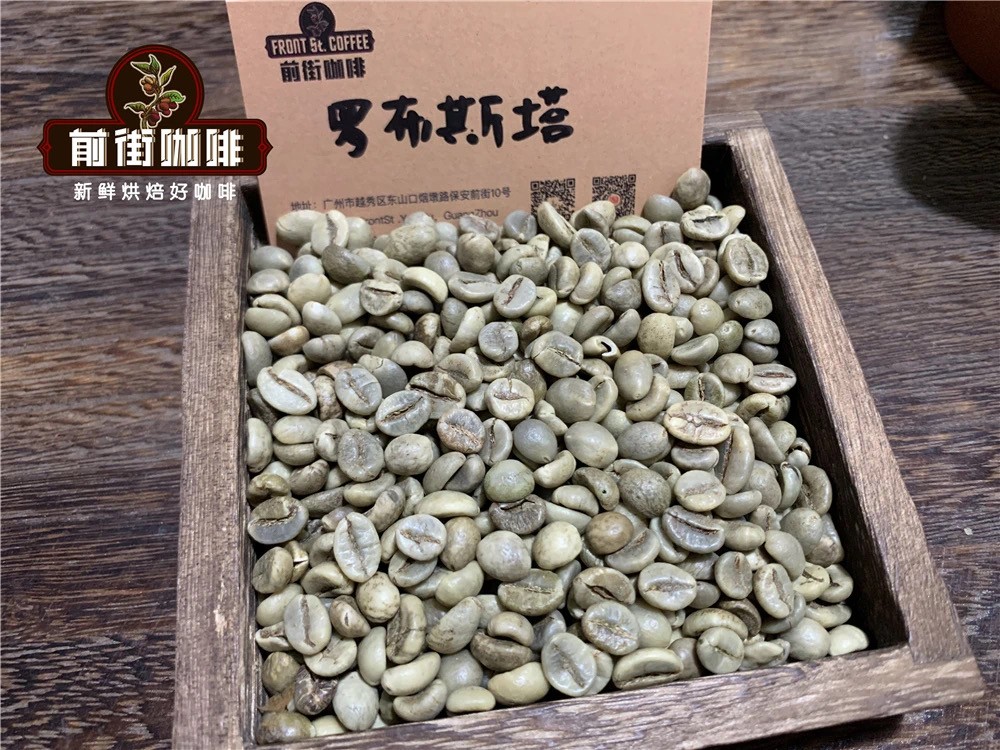
Robusta coffee beans are oval but short, bitter and less fragrant than Arabica coffee beans, so they are mainly commercial beans.
Today Qianjie takes us to learn about some of the main Arabica varieties.
Common varieties of Arabica coffee beans
Arabica is the earliest coffee variety found, is considered to be the best of all varieties, the overall flavor is also better, is the main source of boutique coffee, but the disease resistance is weak, can only be grown in high altitude areas. Arabica coffee trees have been planted for more than 700 years, and many varieties have been developed. at present, the common varieties of Arabica coffee beans include Ironka, Bourbon, Kaddura, Pacas, Vera Shaki, Malago Yapi, Pacamara, New World, Kaduai, Rosa, Tim, Katim and so on. Arabica mostly appears as boutique coffee.
Bourbon and iron pickup constitute the most culturally and genetically important C. arabica coffee group in the world. Historical records show that coffee seeds were brought to Yemen from the coffee forests of southwestern Ethiopia, where they were grown as crops. Recent genetic tests have confirmed that bourbon and iron pickup are the main seeds shipped from Ethiopia to Yemen. The descendants of bourbon and iron pickup spread from Yemen to all over the world, forming the basis for the cultivation of modern Arabica coffee.
Ancient native species
Typica: Ethiopia's oldest native variety, an ancient coffee with an elegant flavor, but far less popular than bourbon. Like all Arabica coffee, the tin card group should have originated in southwestern Ethiopia. Sometime in the 15th or 16th century, it was brought to Yemen. By 1700, seeds from Yemen had been planted in India.
In 1696 and 1699, coffee seeds were sent from the coast of Malabar in India to the island of Batavia (now known as Java), which gave birth to a unique variety of tin cards as we now know. Its derivative varieties include Mantenin, Lanshan, Yunnan Xiaomi, geisha and so on. Ironpika beans are large, pointed, oval or thin, different from bourbon round beans. Therefore, the flavor of Blue Mountain Coffee will be so good, in addition to its growing environment, there are also its ancient tin card varieties.
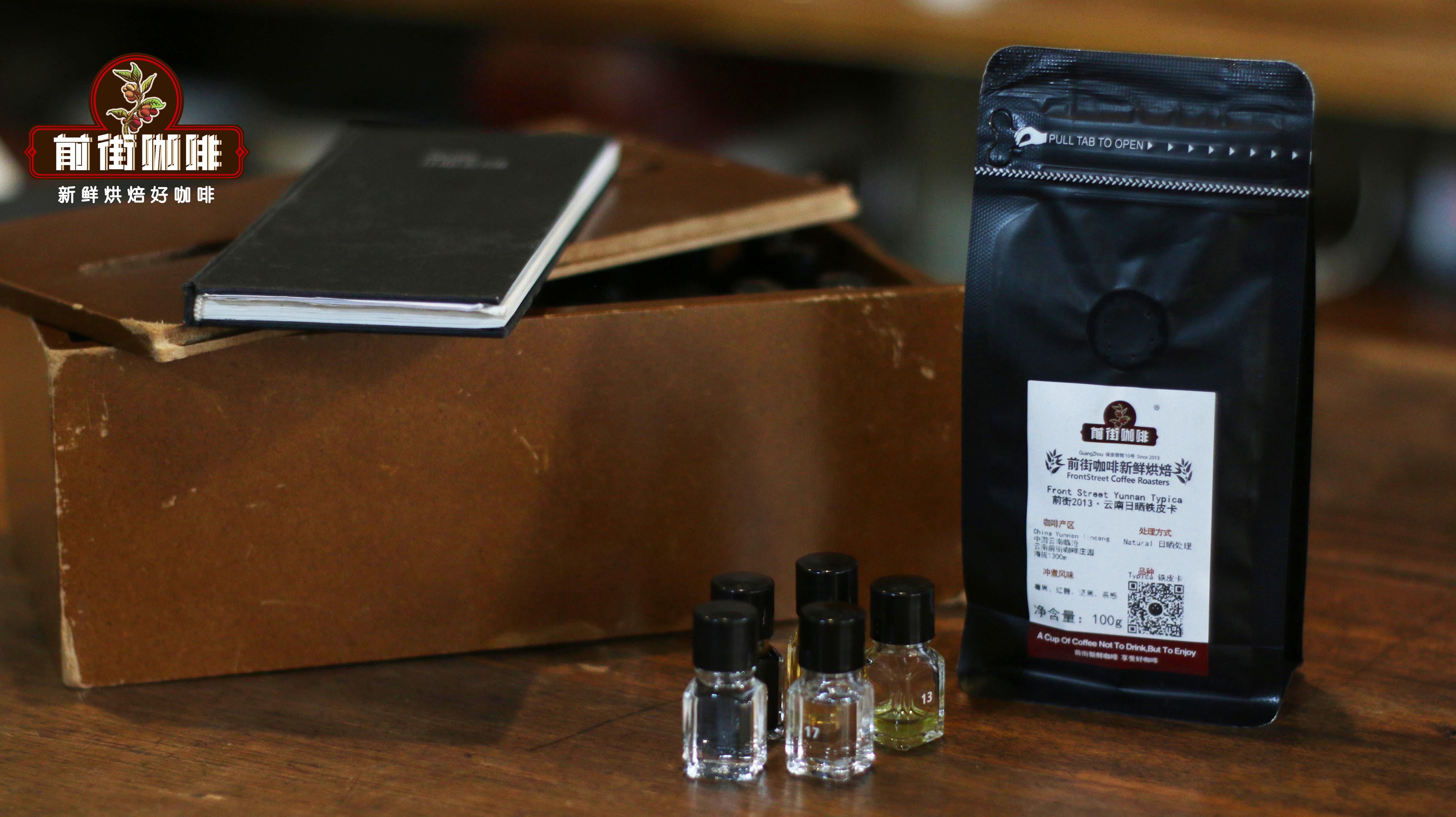
Qianjie Coffee-Yunnan Sun Iron pickup Coffee beans
Producing area: Lincang, Yunnan
Manor: Qianjie Coffee Manor
Altitude: 1300m
Treatment: sun treatment
Variety: iron pickup
Flavor: berries, brown sugar, nuts, tea
Bourbon (Bourbon): an ancient and excellent variety juxtaposed with iron pickup. The French tried to introduce the coffee from Yemen to the island of Bourbon (now Reunion) three times in 1708, 1715 and 1718; recent genetic studies have confirmed this. Only a few plants from the second introduction and some from the third introduction were successful. It was not until the mid-19th century that bourbon coffee left the island and French missionaries known as Spiritans spread to Africa.
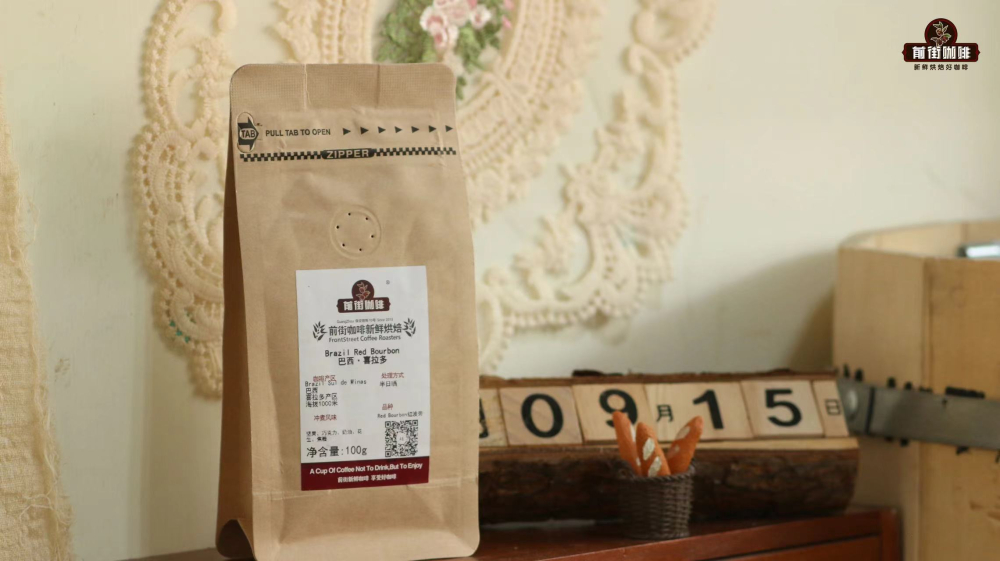
Front Street Coffee-Brazilian Hirado Coffee beans
Producing area: Hirado, Brazil
Altitude: 1100m
Treatment: half-sun treatment
Variety: red bourbon
Flavor: nuts, chocolate, cream, peanuts, caramel
Bourbon is full of vitality and outstanding flavor, and often wins in cup tests. In addition to the variants of pointed beans, bourbon is almost all round beans, beans are a little smaller than tin card, relatively late ripening, but the output is 30% more than tin card, the disadvantage is that the result is a year off.
Gene mutant
SL28&SL34: between 1935 and 1939, Scott's laboratory used SL as a prefix for selected coffee varieties. Forty-two varieties from different producing areas were selected in the laboratory, and their yield, quality, drought resistance and disease resistance were studied. After numbering and screening one by one, SL-28 and SL-34 were finally obtained.
SL28 comes from the bourbon gene group, the bean shape is short and round, the bean body is thick, and it has the flavor characteristics of rising acidity and obvious sweetness. SL34 comes from the iron pickup gene group, the bean shape is oval, it is not as plump as the tin card variety from the side, it will appear relatively flat, and it has the flavor characteristics of sweet and sour balance and caramel aftertaste.
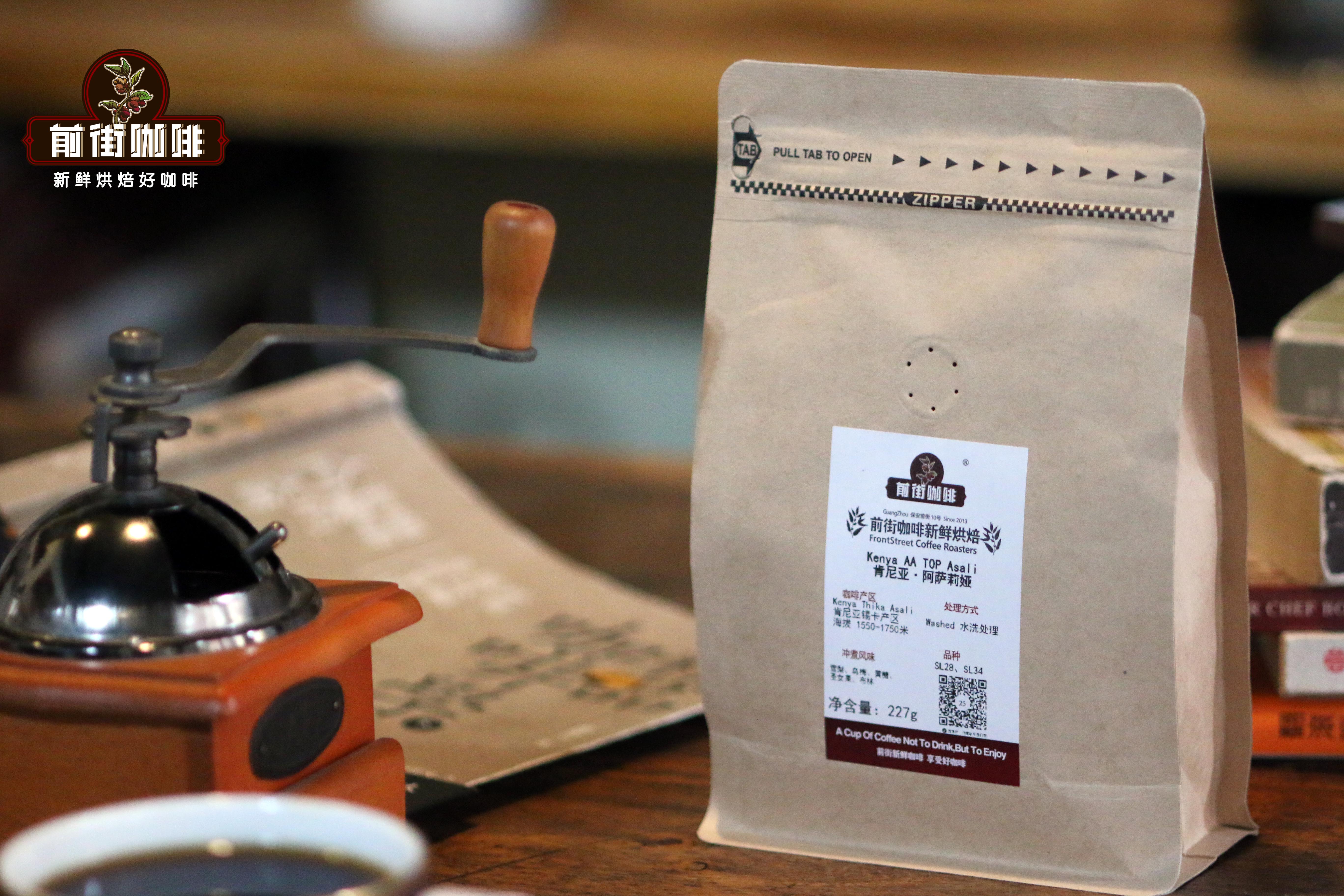
Front Street Coffee-Kenya Asaria Coffee beans
Producing area: Sika, Kenya
Altitude: 1550-1750m
Treatment method: 72 hours washing treatment
Flavor: Sydney, black plum, yellow sugar, virgin fruit, Brin
Geisha: a late blooming variety. Beat the victorious Bourbon, Kaddura, Kaduai, Iron pickup and other varieties, one breath package 2005, 2006, 2007 Panama National Treasure Bean Cup test contest champion. In 2007, the bidding price was $130 per pound, the highest price record for race beans before 2007. At present, 80% of the contestants in the major coffee competitions use geisha as the first choice to use beans. The most famous is the Rose Summer Coffee of the Panamanian Jade Manor.
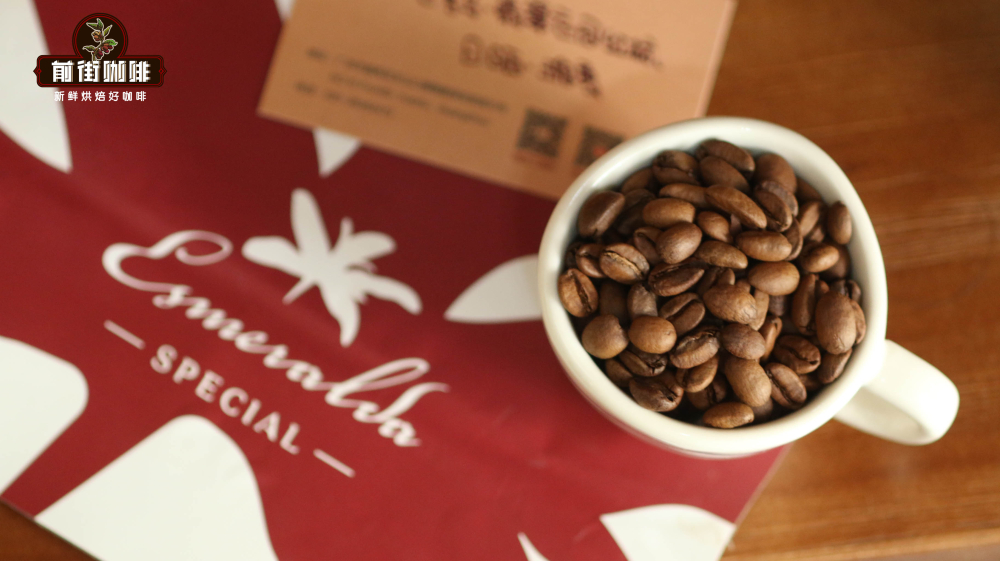
Front Street Coffee-Panamanian Jade Manor Red Standard Rose Summer Coffee beans
Producing area: Pokuit, Panama
Manor: Jade Manor
Parcel: Mario Mario
Altitude: 1700m +
Variety: rose summer seed
Treatment method: sun treatment
Flavor: rose, strawberry, citrus, black tea, honey
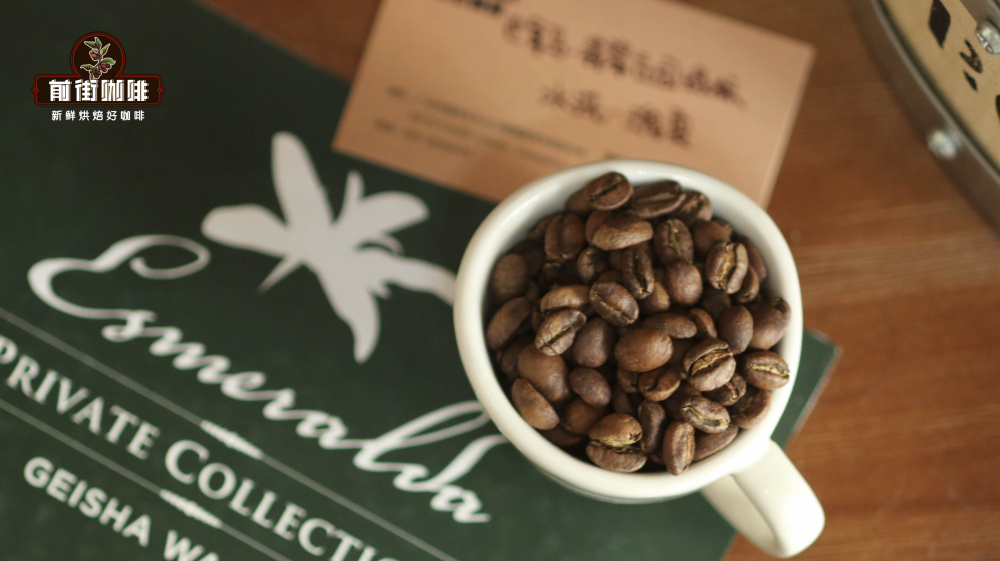
Qianjie Coffee Panama Jade Manor Green label Rose Summer
Producing area: Bouquete
Manor: Jade Manor
Altitude: 1600-1800m
Variety: rose summer seed Geisha
Treatment method: washing treatment method
Flavor: Jasmine, ginger, citrus, Tianguanyin tea, honey
Bourhon Amarello: a bourbon variety endemic to the state of Sao Paulo, Brazil. Generally speaking, the coffee fruit will turn red when it is ripe, but the yellow bourbon will not turn red when it is ripe. It is named after it is orange. The Queen's Manor coffee on the front street is made by Huang Bourbon.
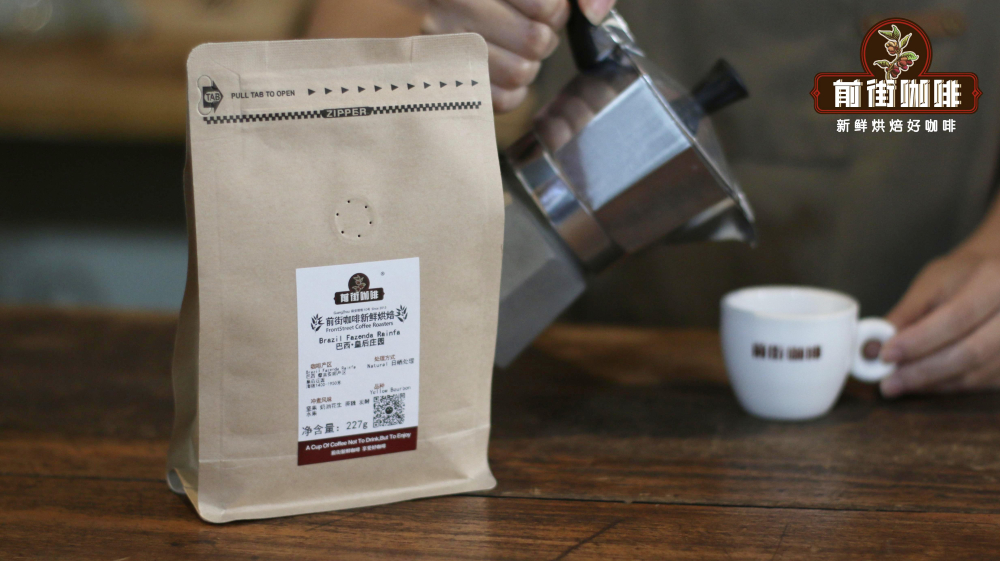
Front Street Coffee-Brazilian Queen Manor Coffee beans
Producing area: Morgiana producing area of Sao Paulo, Brazil
Manor: Queen's Manor
Altitude: 1400-1950m
Treatment: half-sun treatment
Variety: yellow bourbon
Flavor: nuts, peanut cream, sucrose, fermented fruit
Kaddura (Caturra): a monogenic variety of bourbon, discovered in Brazil in the 1950s. The flavor is on a par with or slightly worse than that of bourbon beans, but it is the same as bourbon once every two years. What is more important is that the adaptability is super, there is no need for shade trees, and direct exposure can be full of vitality.
Pacas (Pacas): bourbon variety found in El Salvador. In El Salvador, 68 per cent are bourbon varieties, 29 per cent are Pacas and 3 per cent are Kaduai, Kaddura and the noble Pacamara.
Vera Saatchi (Villa Sarchi): bourbon variety first discovered in Costa Rica in the 1960s.
Elephant beans (Maragogype): the shape of beans is three times bigger than Arabica and is the largest in the world, hence the name. It is the most well-known variety of iron pickup beans, first discovered in 1870 in the Maragogippe bean-producing region of Paxi Asia in northeastern Brazil.
Kent: a hybrid variety of iron pickup found in India with high yield.
Timor: Arabica crosses with Robusta species. The hybrid of Arabica and stout beans found in East Timor is close to Arabica because the chromosomes are 44 of Arabica rather than 22 of stout beans. Because of its low acidity and lack of characteristics, it is often used as a low-cost formula bean. However, East Timor has washed high-altitude pure iron truck, when buying it, it should be clear that it is a hybrid or pure iron card washed beans, the quality of the two is very different, the former is mediocre, and the latter is up to the level of fine beans.
Catimor: commercial beans are the most used. In 1959, Portugal moved the Brazilian bourbon mutant Kadura to East Timor with a stout bean Timo hybrid, and successfully cultivated Katim, but its flavor was slightly poor, but its anti-virus was relatively strong. Katim varieties of coffee are produced in most places in Yunnan at present. But the Qianjie Coffee Manor grows tin card varieties of coffee.
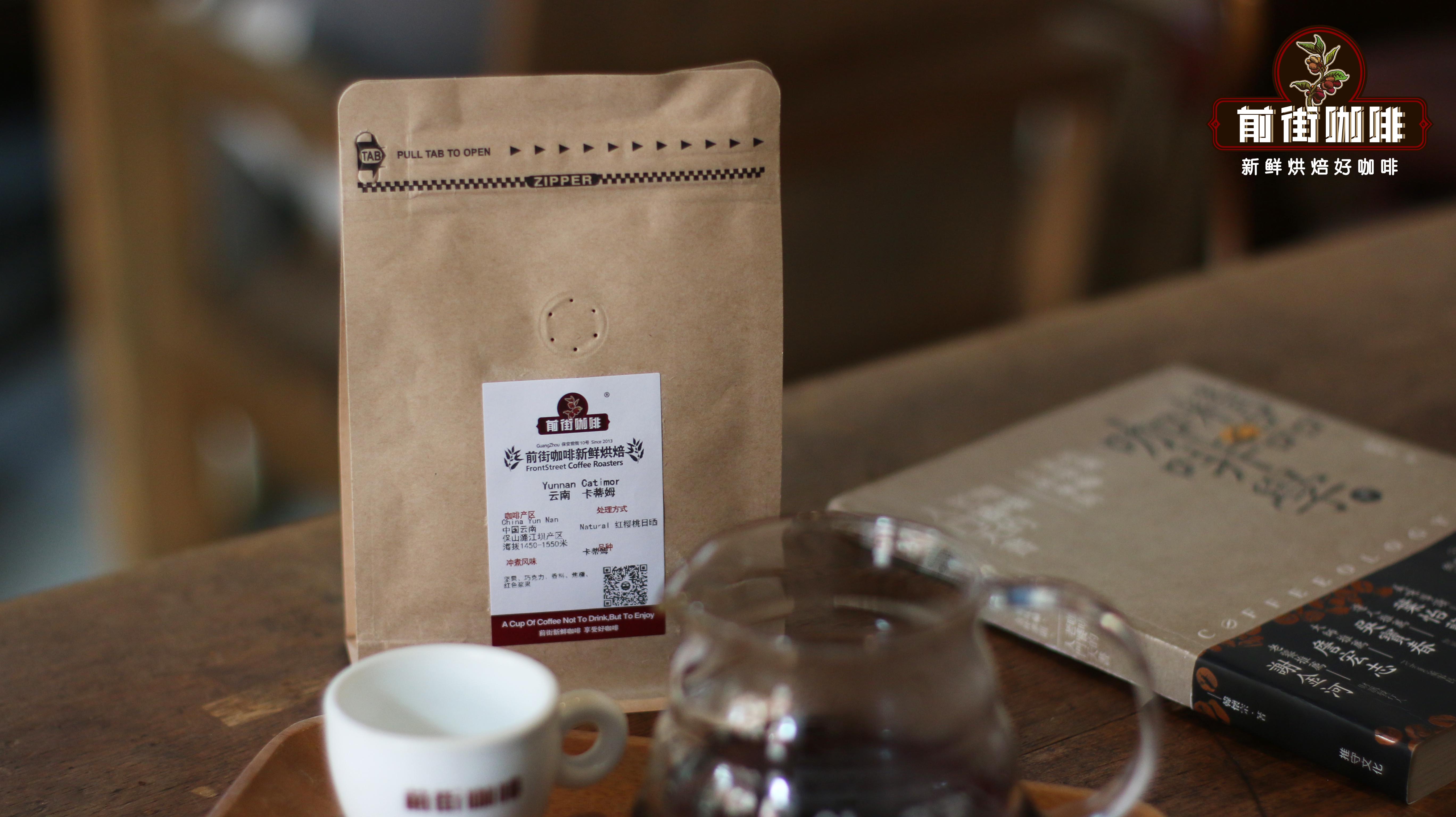
Qianjie Coffee-Yunnan Katim Coffee beans
Producing area: Lujiangba, Baoshan, Yunnan
Altitude: 1450-1550m
Treatment: red cherry in the sun
Variety: Katim
Flavor: nuts, chocolate, spices, caramel, red berries
Mutant Columbia (Variedad Colombia)
Colombia is the world's largest exporter of Arabica. A variety with high disease resistance produced by mating between Cartimo and Kaddura. Resistant to direct sunlight, and can be harvested in a short time. Colombia began to grow widely in the 1980s, replacing the previous inherent variety Tibica as the main variety. Generally speaking, Arakabi coffee trees, represented by Tibica, must have shade trees for it, but the mutant Colombian coffee trees with 1/4 Robusta pedigree do not need shelter trees and can be produced and harvested throughout the year. It is just that in recent years, coffee beans may emit Phenol, which is similar to the smell of iodine, due to the influence of pesticides or chemical fertilizers.
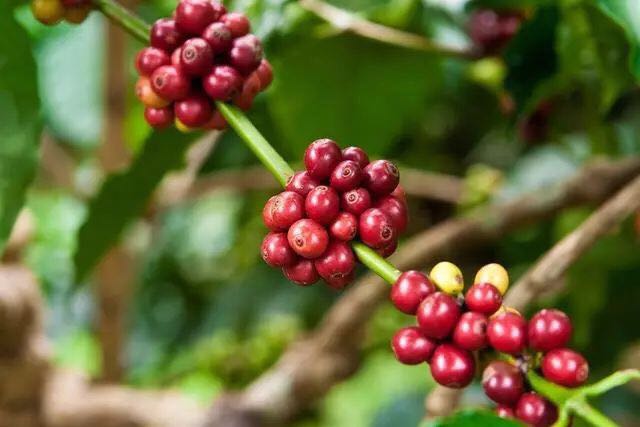
Suggestion on brewing coffee in Qianjie
There are many kinds of coffee and different flavors, but in order to brew a cup of delicious coffee, the freshness of coffee is inevitable. Qianjie believes that the freshness of coffee beans is a very important part of brewing. The coffee beans shipped in Qianjie are all roasted within 5 days, because Qianjie is well aware that the freshness of coffee beans has a great impact on the flavor. The purpose of Qianjie roasting is "freshly roasted coffee", so that every guest who places an order is the freshest coffee when he receives it. The bean cultivation period of coffee is about 4-7 days, so when the guest gets it, it is the time when the flavor is the best.
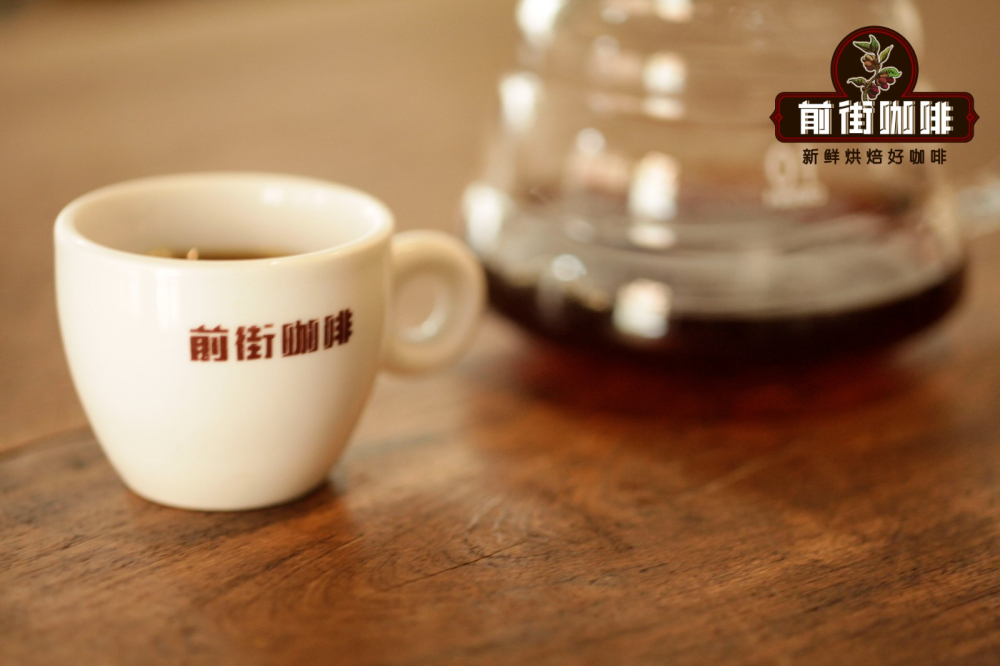
Of course, there are some customers who need help grinding powder in front of the street, which doesn't matter, but Qianjie has to warn: if the coffee beans are ground ahead of time, there is no need to raise the beans, because in the process of transportation, the pressure caused by carbon dioxide in the package can also make the coffee flavor mellow, so when you receive the coffee powder, you can immediately make a cup of coffee to drink. But the coffee powder needs to be brewed in time, because the coffee powder oxidizes more quickly after contact with the air, that is to say, the flavor of the coffee will dissipate more quickly, and the flavor of the coffee is not so good. Therefore, Qianjie suggests buying whole beans, grinding and flushing now, so that we can better taste the flavor of coffee.
There are many different varieties of coffee beans in Qianjie, such as Katim in Yunnan, Iron pickup truck on the 13th in Qianjie of Yunnan, Blue Mountain Coffee in Jamaica, Rose Summer Coffee in Panama, Kaddura Kaduai Coffee in Colombia and so on. Coffee varieties from different producing areas are waiting for you to taste!
Professional coffee knowledge exchange more coffee bean information please follow the coffee workshop (Wechat official account cafe_style)
For more boutique coffee beans, please add private Qianjie coffee on Wechat. WeChat account: qjcoffeex
Important Notice :
前街咖啡 FrontStreet Coffee has moved to new addredd:
FrontStreet Coffee Address: 315,Donghua East Road,GuangZhou
Tel:020 38364473
- Prev

What's the difference between Arabica and Robusta coffee beans? The evolution species of Arabica coffee beans are
Professional coffee knowledge exchange more information about coffee beans Please follow the coffee workshop (Wechat official account cafe_style) what's the difference between Arabica and Robusta coffee beans? What kinds of Arabica coffee beans do you have? If the variety of coffee is divided by biology, it can be divided into Arabica, Robusta and Liberica.
- Next
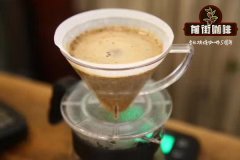
What are the varieties of Arabica coffee beans? What are the derivative types and characteristics of Arabica coffee beans?
Professional coffee knowledge exchange more coffee bean information please follow the coffee workshop (Wechat official account cafe_style) what are the varieties of Arabica coffee beans? What are the derivative types and characteristics of Arabica coffee beans? From the point of view of appearance, Arabica bean is long and flat, the central line is S-curve, Robbosa bean is strong, the shape is more round, and the central line is closer to a straight line.
Related
- Detailed explanation of Jadeite planting Land in Panamanian Jadeite Manor introduction to the grading system of Jadeite competitive bidding, Red bid, Green bid and Rose Summer
- Story of Coffee planting in Brenka region of Costa Rica Stonehenge Manor anaerobic heavy honey treatment of flavor mouth
- What's on the barrel of Blue Mountain Coffee beans?
- Can American coffee also pull flowers? How to use hot American style to pull out a good-looking pattern?
- Can you make a cold extract with coffee beans? What is the right proportion for cold-extracted coffee formula?
- Indonesian PWN Gold Mandrine Coffee Origin Features Flavor How to Chong? Mandolin coffee is American.
- A brief introduction to the flavor characteristics of Brazilian yellow bourbon coffee beans
- What is the effect of different water quality on the flavor of cold-extracted coffee? What kind of water is best for brewing coffee?
- Why do you think of Rose Summer whenever you mention Panamanian coffee?
- Introduction to the characteristics of authentic blue mountain coffee bean producing areas? What is the CIB Coffee Authority in Jamaica?

